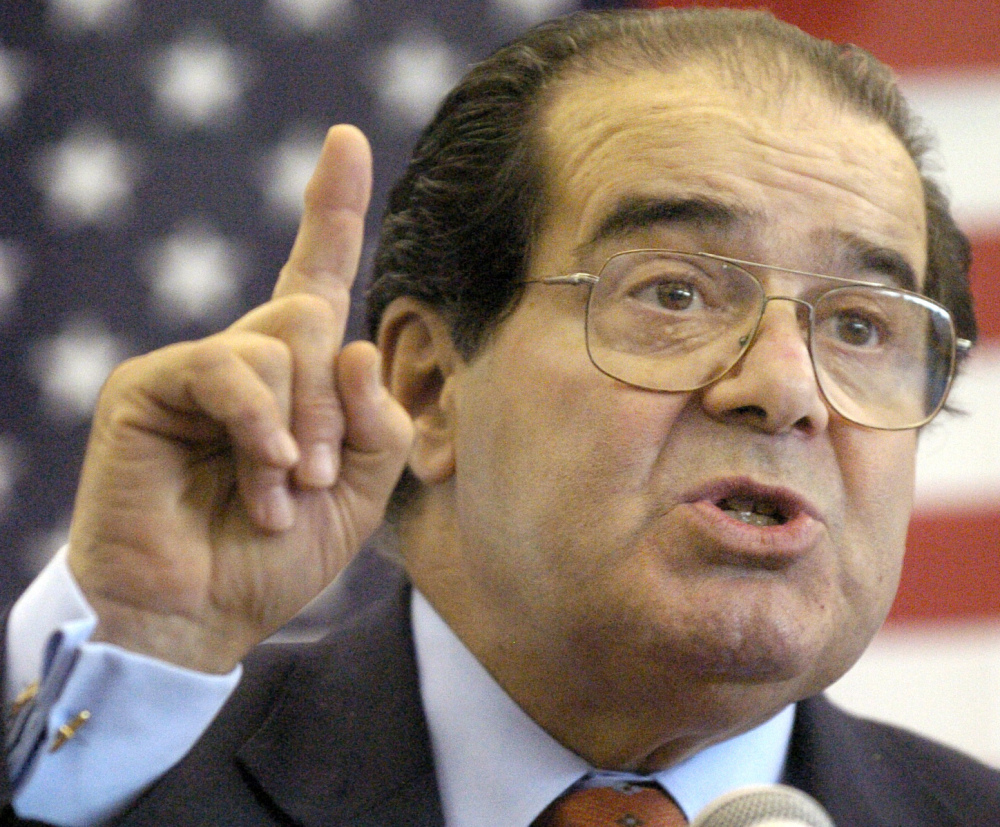WELLS — Many are opposed to President Obama exercising his constitutional right to appoint a replacement for Justice Antonin Scalia. Some have argued that Obama’s appointment of Scalia’s replacement would necessitate a notorious “lame-duck” nomination, and consequently, the filling of Scalia’s vacancy should await the arrival of the next president.
And yet, an interesting case can be made that lame-duck appointees to the Supreme Court often become the greatest justices ever to have served on the nation’s highest bench.
History is on the side of those who would seek to reject any nomination made by President Obama to fill the vacancy. Lame-duck Supreme Court nominations, defined here as those made in the last year of a president’s final year in office, have not fared well.
Indeed, lame-duck nominations sent to Senates controlled by the party in opposition to the president – the position in which President Obama now finds himself – have been decisively unsuccessful. While only approximately 19 percent of the over 150 Supreme Court nominations forwarded to the Senate since 1789 have been refused confirmation, a shockingly lethal 71 percent (10 of 14) of lame-duck nominations sent to opposition Senates have been denied confirmation.
Seemingly, this is bad news for President Obama. Still, most of these nominations were turned down directly by opponents who did not object to the president’s very right to make the nominations as some now maintain.
There is a positive side to lame-duck nominations if one considers the overall quality and character of Supreme Court justices who were lame-duck appointees to the court.
In 1972, a group of Supreme Court experts rated the quality of each justice who had served on the court to that date. The experts ranked each justice on a scale from 5 to 1, with 5 (“great”), 4 (“near-great”), 3 (“average”), 2 (“below average”) and 1 (“failure”). And while these ratings are both subjective and somewhat dated, they do provide a useful and timely perspective.
About 19 percent of the 16 lame-duck appointees who survived the confirmation process were categorized by the experts as “great.” Only 11 percent of all other appointees were so designated.
Conversely, while about 10 percent of all other appointees were ranked as “failures,” not a single lame-duck appointee was so designated. In addition, the average 3.38 rating for the lame-duck appointees compares quite well to the 3.14 mean for all other non-lame-duck appointees.
When the extremes are compared by dropping out the many justices categorized as “average,” the difference was even more striking. The average rating for the lame-duck nominees was 3.57, strikingly higher that of the non lame-duck nominees of 3.12.
More notably, three of the perceived greatest justices ever to serve on the court were lame-duck appointees. This classy trio consists of John Marshall, Louis D. Brandeis and Benjamin Cardozo.
Marshall’s presence among the lame-duck appointees is particularly significant. In the 1972 poll, Marshall stood alone as the one member of the court designated as “great” by the unanimous vote of the experts. Second to Marshall in approaching gaining the unanimous votes of the experts as “great” was still another lame-duck appointee, Brandeis. This evidence lends support to the conclusion that justices appointed to the Supreme Court in the last year of a president’s tenure tend to be of higher quality than those appointed in a president’s first three years.
Above and beyond the statistical data, there are logical political reasons for this phenomenon.
Presidents facing an unfavorable situation in the Senate – specifically, lame-duck presidents sending a nomination to a Senate controlled by the opposition party – are likely acutely aware of the increased risk their nominations will be refused confirmation. Accordingly, they will likely take unusual measures to increase the chances for confirmation.
One method of lessening the risk in these situations is to select an individual who possesses a widely recognized reputation for superb legal ability and outstanding character. Precisely because lame-duck presidents have usually been atypically concerned with their nominee’s character and legal competence and ability, it is not at all surprising that more of their appointees go on to greatness on the court. It is simply a wise political move to turn to unchallenged quality and character in a threat situation.
The argument in this instance is not that President Obama will appoint to the Supreme Court one who approaches the stature of Marshall or Brandeis or, for some at least, Scalia. Still, it might be helpful to keep the above information in mind as the debate continues as to whether (or not) President Obama should be permitted to make the next appointment to the Supreme Court.
There cannot be any doubt that as a sitting president, he always retains the constitutional right to fill the vacancy created by Scalia’s death. In addition, we might also add the rejoinder that Obama’s making the appointment might ever so more likely increase the quality of the court. Seemingly, this is good news for President Obama, the Supreme Court and the people of the United States.
Copy the Story Link
Send questions/comments to the editors.



Success. Please wait for the page to reload. If the page does not reload within 5 seconds, please refresh the page.
Enter your email and password to access comments.
Hi, to comment on stories you must . This profile is in addition to your subscription and website login.
Already have a commenting profile? .
Invalid username/password.
Please check your email to confirm and complete your registration.
Only subscribers are eligible to post comments. Please subscribe or login first for digital access. Here’s why.
Use the form below to reset your password. When you've submitted your account email, we will send an email with a reset code.